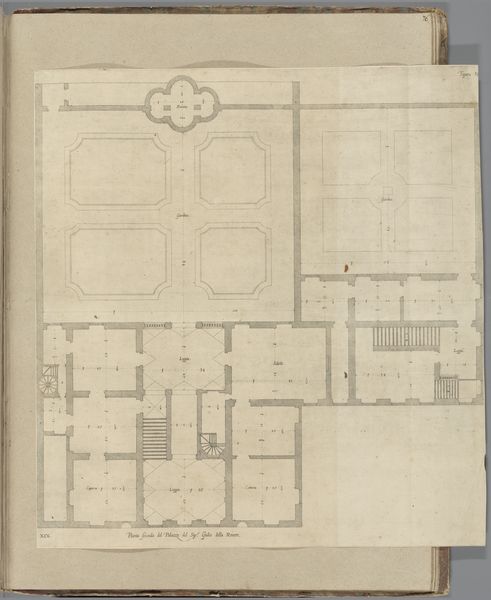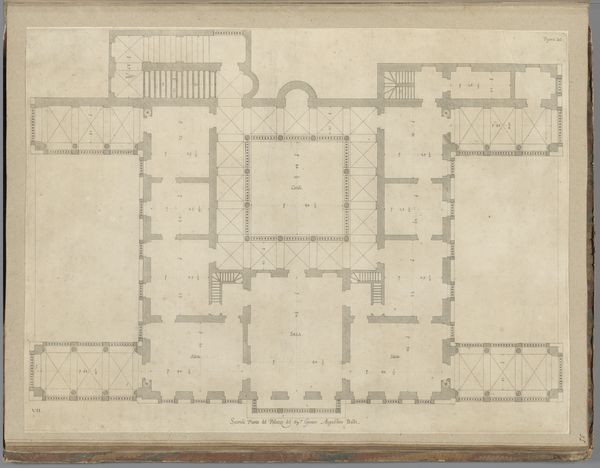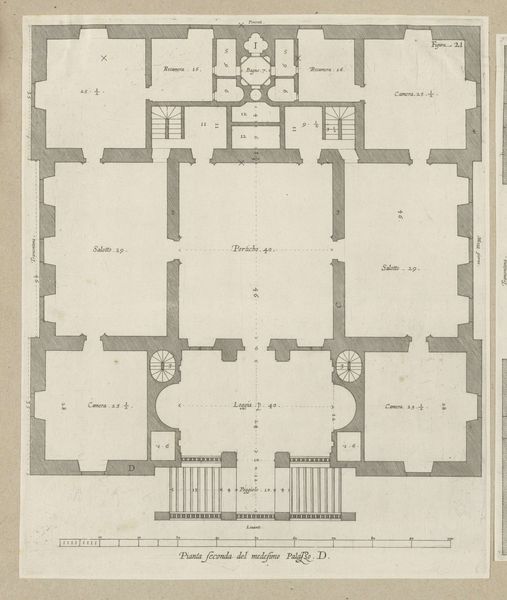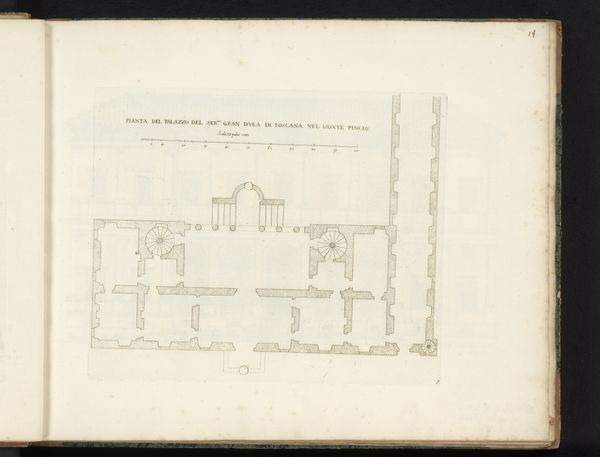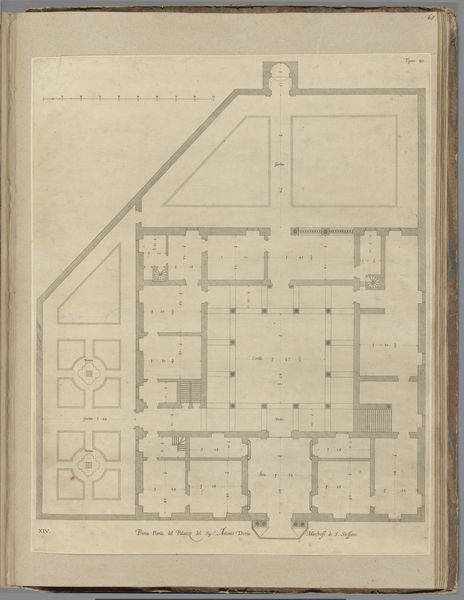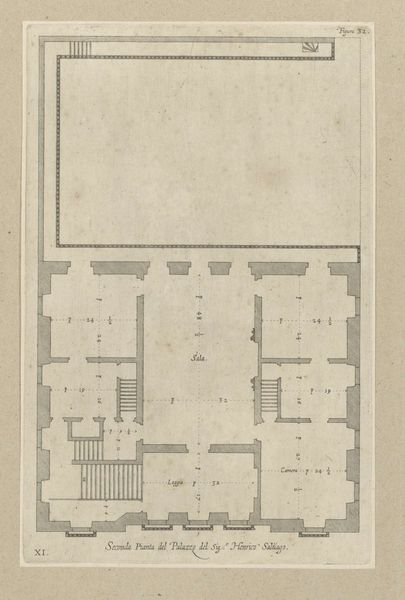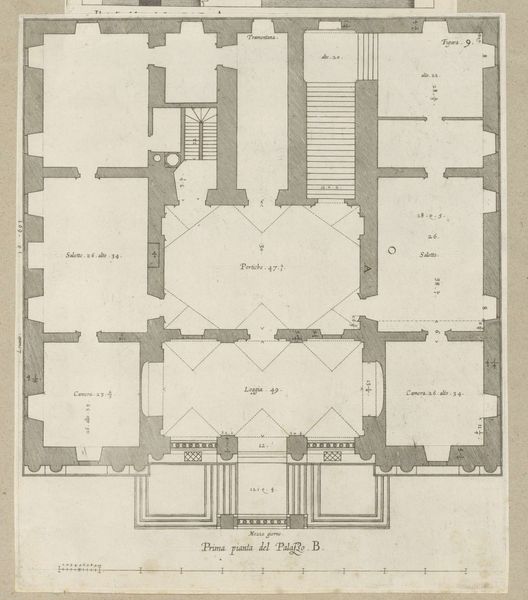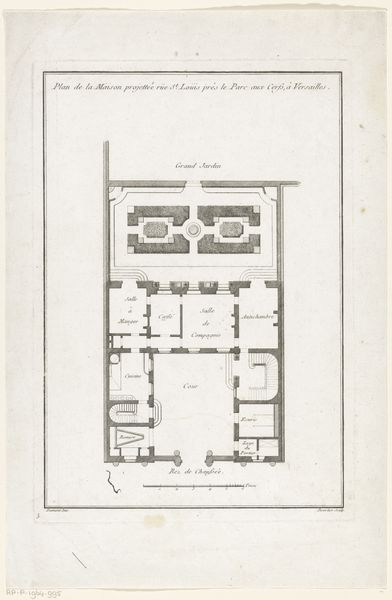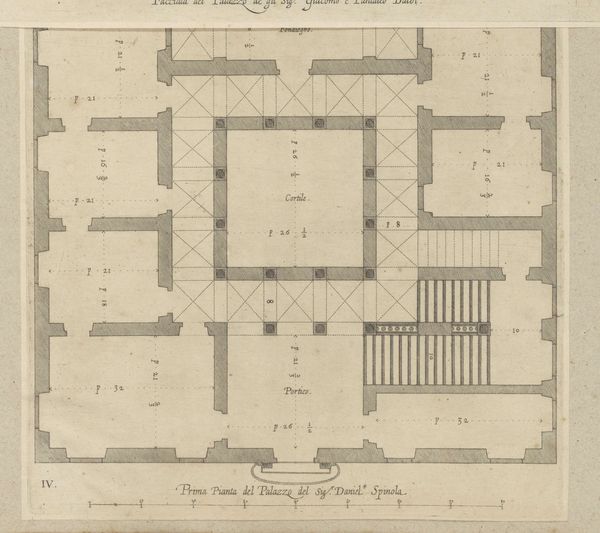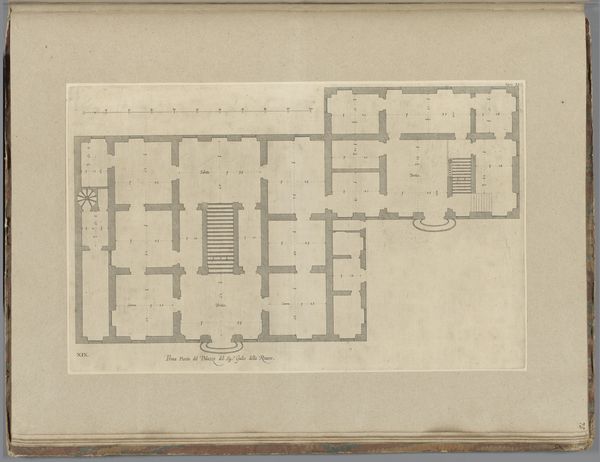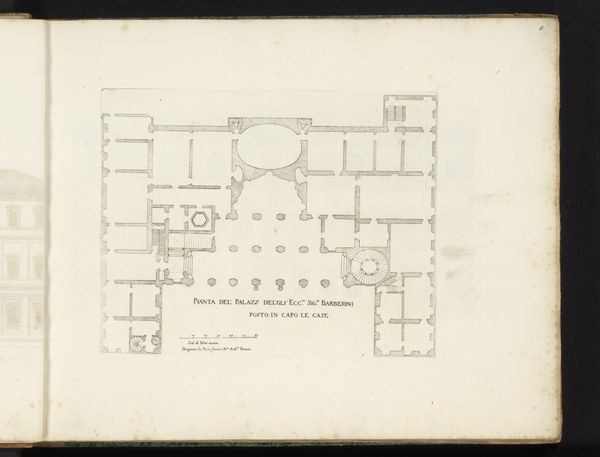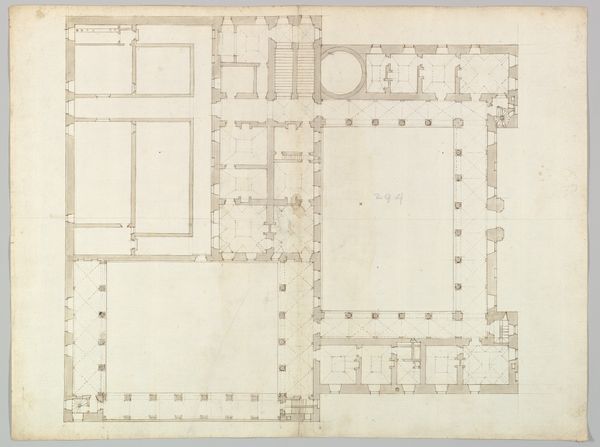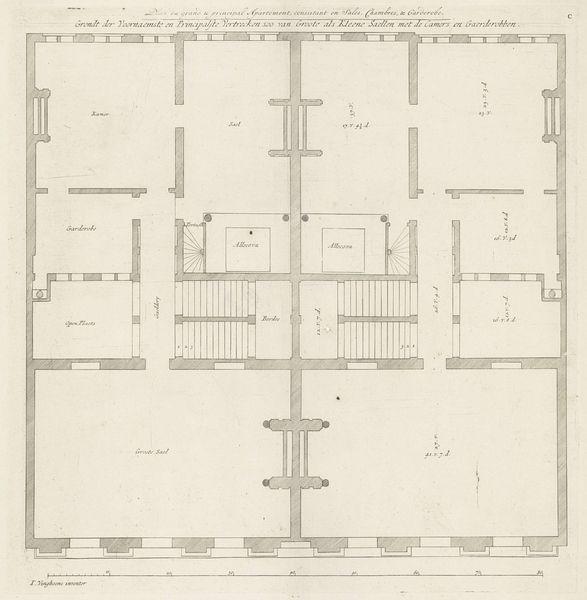
drawing, print, paper, ink, architecture
#
drawing
#
baroque
# print
#
perspective
#
paper
#
ink
#
geometric
#
line
#
cityscape
#
architecture
Dimensions: height 538 mm, width 302 mm, height 583 mm, width 435 mm
Copyright: Rijks Museum: Open Domain
Editor: This is “Plattegrond van de basiliek S. Siro te Genua,” or “Floor plan of the basilica of S. Siro in Genoa” created in 1622 by Nicolaes Ryckmans. It's a drawing, a print in ink on paper, held at the Rijksmuseum. It’s incredible to see such precision in architectural drawing from so long ago. It makes me think about permanence and intention. What jumps out at you when you look at this? Curator: Well, seeing this, I immediately think of the Basilica itself, of course, and wonder about its symbolic importance to the people of Genoa at that time. Buildings, especially religious ones, are never just buildings, are they? Editor: Absolutely not! So, what kind of cultural symbols do you think we're seeing here? Curator: Look at the perfect geometry. The floor plan almost resembles a cross. Ryckmans uses circles, squares, and the linear structure. These geometric shapes have carried powerful meanings across centuries. For example, consider the Renaissance fascination with perfect circles symbolizing divine unity and squares signifying earthly stability. Seeing these two forms unified... how does that strike you? Editor: That makes sense! I never thought about a floor plan having any symbolic value but seeing these shapes integrated so deliberately, I can feel that continuity with the past. Curator: Precisely! And think about how the plan translates to the lived experience of the people inhabiting the space; walking through a cruciform plan influences how one interacts with their spirituality. It guides their path both physically and, perhaps, metaphorically. Now, imagine walking into this Basilica…what sort of emotion might be invoked by experiencing those shapes and that order? Editor: I guess it would be similar to standing inside a mandala: a sense of centeredness, harmony, maybe even a bit of awe. Thanks, I would’ve just seen the floor plan but I now recognize so much more. Curator: It’s all about uncovering those layers, seeing the whispers of history echoing through lines and shapes. And considering the potent symbols reflected in its design allows us to think about how this building really could move people in the 17th century, and perhaps still today.
Comments
No comments
Be the first to comment and join the conversation on the ultimate creative platform.
